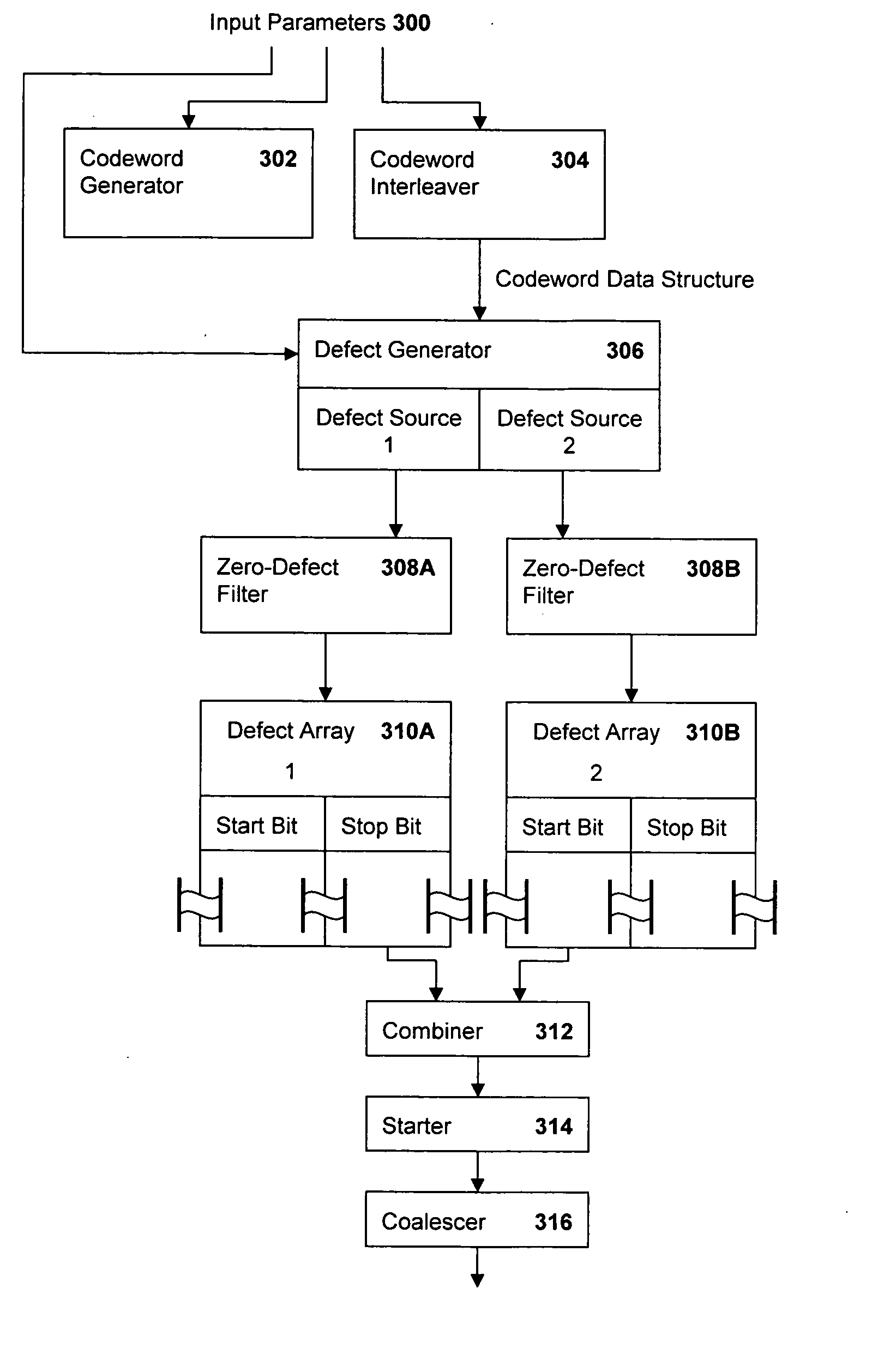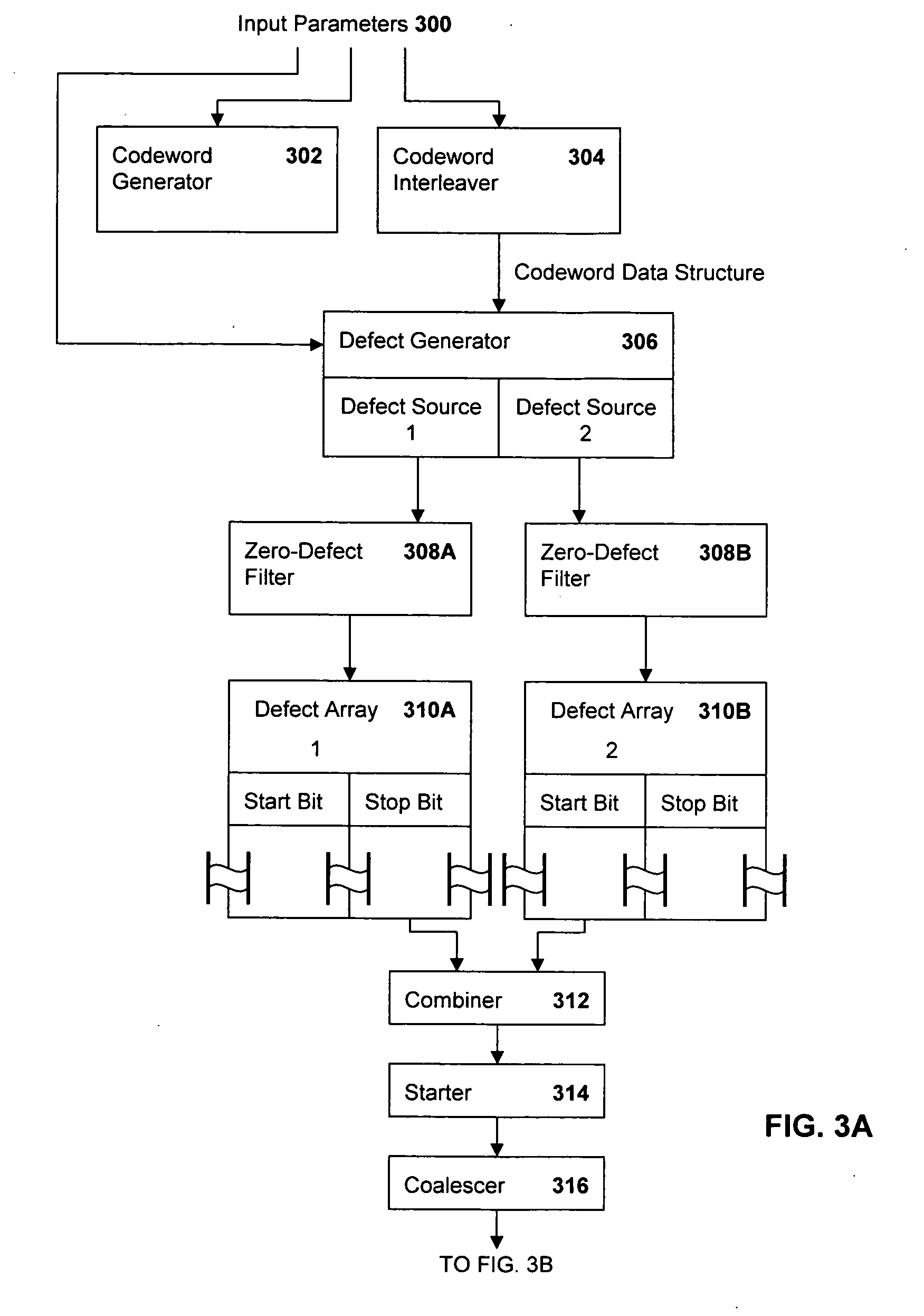Modeling error correction capability with estimation of defect parameters
a technology of error correction and defect parameters, applied in the field of data systems, can solve problems such as white noise errors in hdd systems, multiple codeword influence, and complex error analysis by new structures, and achieve the effects of accurate modeling error characteristics, improved processing efficiency, and increased processing speed
- Summary
- Abstract
- Description
- Claims
- Application Information
AI Technical Summary
Benefits of technology
Problems solved by technology
Method used
Image
Examples
Embodiment Construction
[0021] In order to develop a realistic model for the interleaved codeword, an analogy may be used to visualize the problem. The problem of predicting or simulating defects in an ECC codeword is analogous to tossing water balloons into a row of paint cans. Consider a row of paint cans without lids, starting close by and extending away. A water balloon is tossed at the row of paint cans. If the balloon lands beyond the row of cans, no can will contain water. If the balloon lands within the row of cans, one or more cans will get water in it, depending upon the size of the balloon and the alignment of the balloon with the cans' openings. A balloon smaller than one paint can diameter may put water into one or two cans, depending upon the alignment of the balloon and the can edges. A balloon larger than one can diameter will put water into at least two cans.
[0022] The paint can model can simulate ECC codewords and defects. The arrangement of paint cans represents a data structure with ea...
PUM
 Login to View More
Login to View More Abstract
Description
Claims
Application Information
 Login to View More
Login to View More - R&D
- Intellectual Property
- Life Sciences
- Materials
- Tech Scout
- Unparalleled Data Quality
- Higher Quality Content
- 60% Fewer Hallucinations
Browse by: Latest US Patents, China's latest patents, Technical Efficacy Thesaurus, Application Domain, Technology Topic, Popular Technical Reports.
© 2025 PatSnap. All rights reserved.Legal|Privacy policy|Modern Slavery Act Transparency Statement|Sitemap|About US| Contact US: help@patsnap.com



